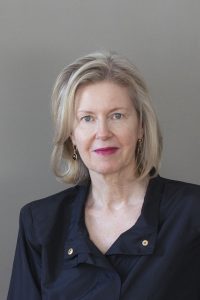6 May 2017
Described by his peers as ‘an architect of great distinction who has possibly affected more lives and contributed more to his city than most could dream of’, Peter Elliott AM has today been awarded Australian architecture’s highest honour, the Australian Institute of Architects’ Gold Medal.
Over a career spanning more than four decades, Peter’s multi-award winning designs have shaped iconic public buildings and spaces across Melbourne. He has been lauded by his fellow architects as ‘remarkably talented’ and demonstrating ‘an undivided, unbreakable and uncompromised integrity’.
Peter’s early projects, including children’s playgrounds, childcare centres, public housing and a few private houses, established his credentials not only as an outstanding architect but also as a community advocate. Peter’s contribution received national recognition early in his career when at the age of just 36, Peter was made a Member of the General Division of the Order of Australia for his services to the community as an architect.
From his first large commission, the Knox Schlapp Public Housing project in Port Melbourne, Peter consolidated his practice, receiving successively larger public commissions, starting with the Carlton Baths and Community Centre in 1986, which won the Victorian Architecture Medal in 1991.
These were followed by notable public works including the conservatory in the Ballarat Botanical Gardens, the Observatory Gate at the Melbourne Royal Botanic Gardens, Spencer Street Footbridge across the Yarra River and the renovation of the State Government Offices in the Treasury Reserve. It was at this time that Peter and his practice also embarked upon what became the multi-decade Urban Spaces Project at RMIT University.
A growing portfolio of city making education and infrastructure projects led to Peter been described as an ‘urban surgeon’. In addition to the large-scale RMIT project, Peter’s commissions included the Victoria University Law School the Melbourne Grammar School Memorial Hall, the Visual Arts Centre for Latrobe University in Bendigo and the School of Performing Arts and Creative Education for Geelong Grammar School. VicRoads Principal urban designer Lorrae Wild says Peter’s ‘timeless and elegant designs’ have ‘changed the face of the Western suburbs of Melbourne, with striking noise walls, bridges and interchanges along the Deer Park Bypass and Western Ring Road.’
Receiving the Gold Medal, Peter paid tribute to his mentors, collaborators and students. ‘I am personally indebted to a small number of exceptional people who took the trouble to foster and mentor me as a young architect. And then there are the many hundreds of people whom I have worked and taught with for more than forty years of practice and academic life, to whom I owe a special debt of thanks for their own blend of talent, inspiration and friendship – for architecture is a collective activity dependent on the cooperation of a multitude of skilled hands and cultured minds.’
Institute National President Ken Maher presented Peter the award at a special ceremony held at Sydney’s International Convention Centre on Saturday 6 May on the second day of the annual National Architecture Conference.
The Gold Medal Jury was composed of Maher, Immediate Past President Jon Clements, Peter Stutchbury, Jill Garner and Lindy Atkin.
Previous recipients of the Gold Medal include Glenn Murcutt, Jørn Utzon, Brit Andresen, Harry Seidler and Robin Boyd.

 Queensland architect Catherine Baudet has tonight been awarded the inaugural Paula Whitman Leadership in Gender Equity Prize for her outstanding support for women in the architectural profession spanning more than 30 years.
Queensland architect Catherine Baudet has tonight been awarded the inaugural Paula Whitman Leadership in Gender Equity Prize for her outstanding support for women in the architectural profession spanning more than 30 years.